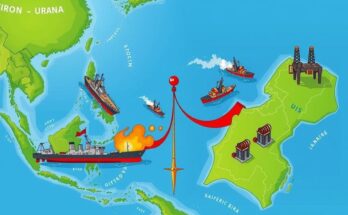Greenland held a parliamentary election on March 11, 2023, with over 40,420 voters participating. They will elect 31 members to the Inatsisartut from 213 candidates of six political parties. Prime Minister Mute Egede called the election a “decisive moment” for the island’s future, emphasizing the importance of Greenland’s sovereignty amidst external claims.
On March 11, 2023, Greenland conducted its parliamentary election, allowing over 40,420 eligible voters to participate at 72 polling stations. These stations opened at 9 a.m. local time and closed at 8 p.m. local time. The election will determine 31 members of the Inatsisartut, Greenland’s parliament, from a pool of 213 candidates from six political parties.
The election results will shape the composition of Greenland’s autonomous government. Mute Egede, the Prime Minister of Greenland and head of the Inuit Ataqatigiit (IA) party, termed the election a “decisive moment” for the territory’s future. Danish Prime Minister Mette Frederiksen also offered her well-wishes for the election via social media.
In an interview with Danish broadcaster DR prior to the election, Egede indicated that his primary focus, should he secure re-election, would be to reaffirm Greenland’s sovereignty. He emphasized, “Greenland belongs to Greenlanders, no matter how many times the U.S. president claims he wants control over it,” referencing ongoing remarks from U.S. President Donald Trump regarding Greenland’s ownership.
Greenland’s parliamentary election represents a significant event in determining its political future and sovereignty. With 31 members to be elected from 213 candidates across various political parties, the outcome is crucial for the territory’s autonomy. Prime Minister Mute Egede’s assertions reaffirm the commitment to self-determination amidst international interest from the United States.
Original Source: english.news.cn




